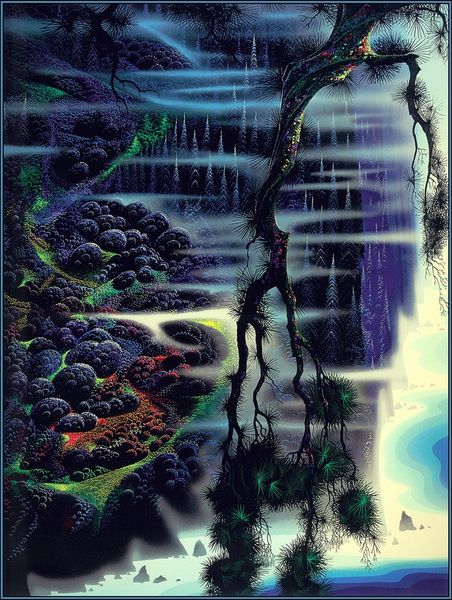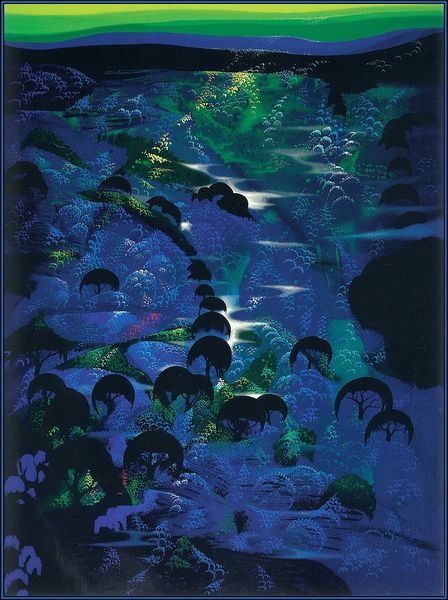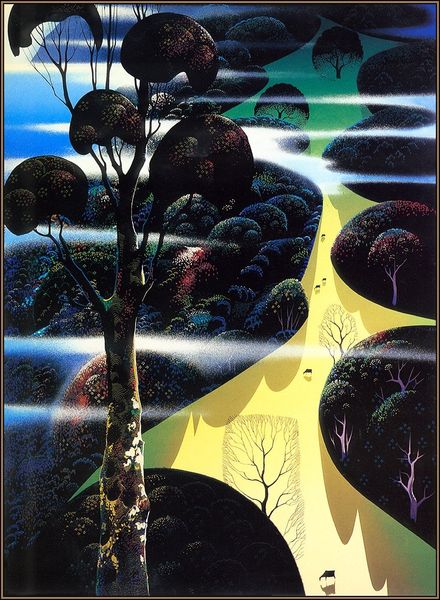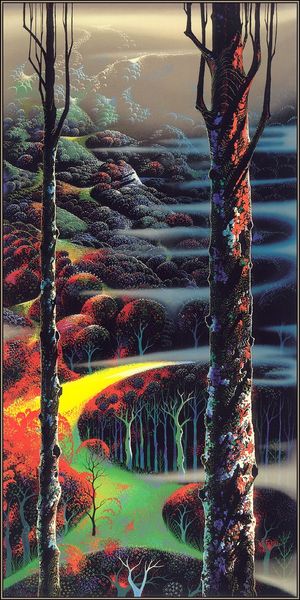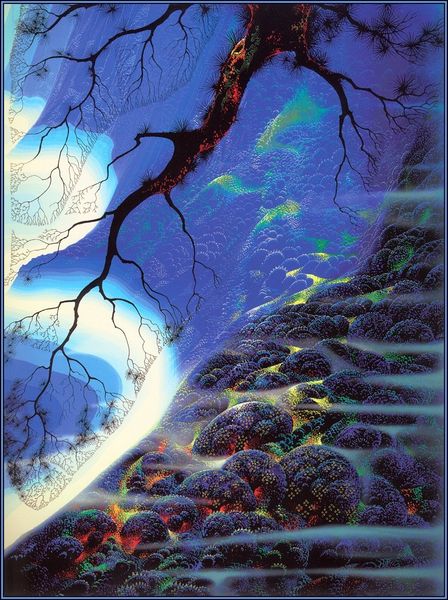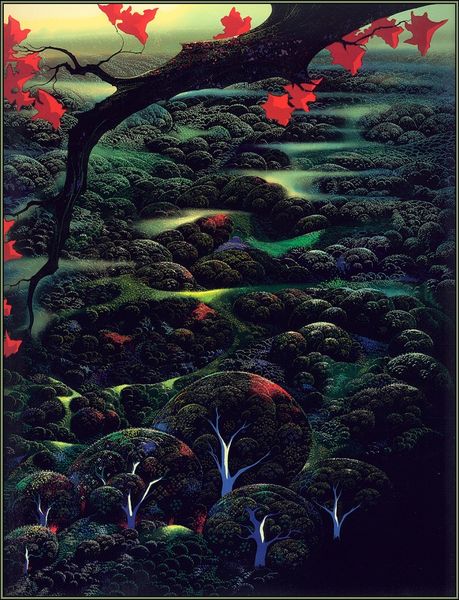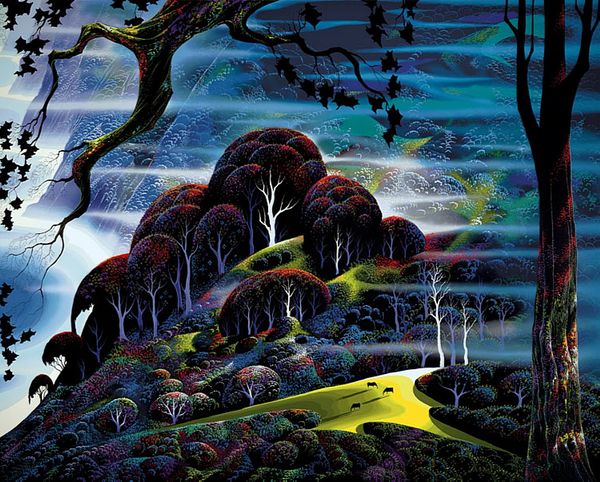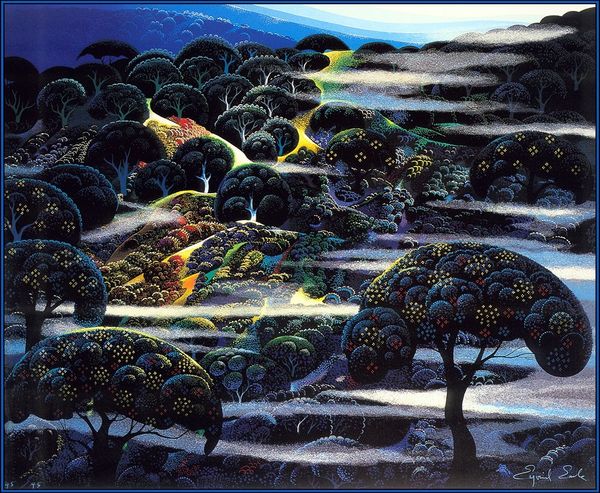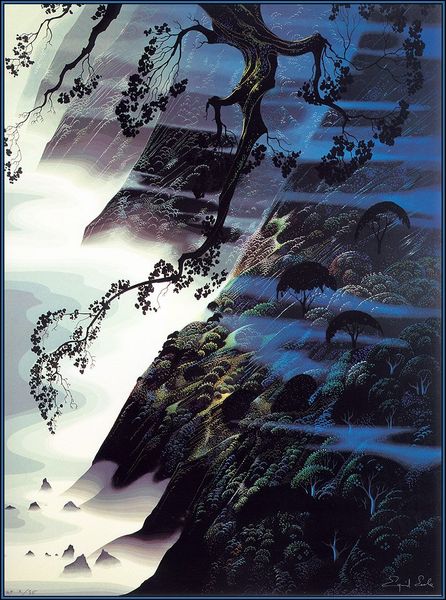
tempera, painting, acrylic-paint
#
tree
#
organic
#
fantasy art
#
generative art
#
tempera
#
painting
#
fantasy illustration
#
landscape
#
fantasy-art
#
acrylic-paint
#
fantasy flora
#
forest
Copyright: Eyvind Earle,Fair Use
Curator: Let’s take a look at Eyvind Earle’s “Into the Forest,” completed in 1994. What are your initial thoughts? Editor: The meticulous detail is striking. The entire surface shimmers, almost feels like I’m looking at a tapestry instead of a painting made with tempera and acrylic-paint. Curator: Right, his technique certainly leans into meticulous production! It reflects his background in animation and design for, among others, Walt Disney. Note how he uses these highly refined details to represent the landscape as something familiar, but definitely otherworldly. It makes me consider how mass culture, and its methods, affect even what seems “high” art. Editor: I’m particularly drawn to the way he’s handled the light and mist. They seem to have almost physical properties, separating and layering the picture plane to add volume to an otherwise stylized landscape. Considering it as labor—layer upon layer to make something ethereal seem so palpable. Curator: It’s fascinating how he blends traditions. Think about the Luminists from earlier in American art, focusing on light as almost divine, then filter it through Earle's very precise style honed creating scenes for popular films like Sleeping Beauty. Is it spiritual, commercial, both? How did these sorts of popular venues impact painters? Editor: Definitely both. And look at the color! It’s jewel-like but almost… artificial. Given Earle’s background in commercial art and mass reproduction, I have to wonder if his approach to landscape wasn’t fundamentally shaped by the technologies and economies of color printing. It’s almost as if the natural world had been meticulously engineered, fabricated. Curator: An engineered nature – that phrase opens up so many avenues for how to contextualize his place in 20th-century visual culture! It brings up ideas of simulation and manufactured experience, the theme-park-ification of nature that was well underway by the time he made this piece. Editor: It certainly does that, reflecting the changing experience with “nature”. Looking closely at the facture gives us entry point into art history but also consumerism. Seeing the layers of the land almost built and illuminated, does it reveal the tension in accessing nature through a commodified lens? Curator: Definitely a powerful, potentially even a cynical read about the commercialization of everything, including our experience of landscape itself! Editor: Absolutely! It really opens up thinking about landscape in general!
Comments
No comments
Be the first to comment and join the conversation on the ultimate creative platform.
